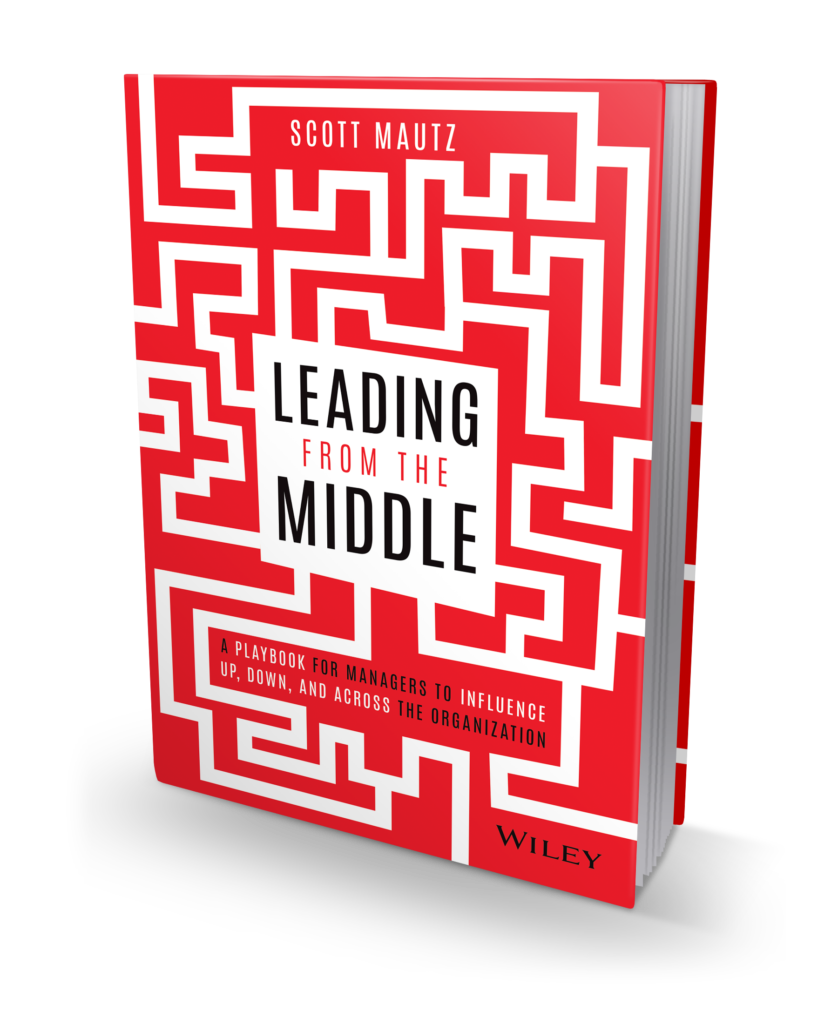
I think it’s safe to say this last year represents a tremendous period of change for many of us.
And it won’t be the last.
I’m not saying the whole world will go through what we’ve gone through any time again soon (please, no!). Just that change will most certainly come at you again, and again, in waves. Or droplets. It requires adaptability. Especially in our jobs, and especially if you’re a middle manager—anyone who has a boss and is a boss, and must lead up, down, and across the organization to succeed in your role.
As I discuss in my new book, Leading from the Middle: A Playbook for Managers to Influence Up, Down, and Across the Organization, many of us must learn to adapt, and quickly, simply because we live in the middle of chaos. Ever changing (even competing) priorities, requests, directives, objectives, and marketplace dynamics are just a few of the elements in constant flux. You have to be like the flexible section of those two-part “bendy buses” you see every now and then, accommodating the rigidities of the vehicle while ensuring the front and back are moving in the same direction. No easy task, this adapting.
But know that research shows great adaptability comes from three types of flexibility in particular.
1. Intellectual flexibility
This means keeping an open mind, incorporating new data and drawing conclusions accordingly, switching quickly back and forth between the big picture and detail, creative solutioning, and leveraging your learning agility (ability to learn).
Tip: To improve your intellectual flexibility, practice running what psychologists call the “Echo Chamber Test.” When you’re considering actions to take in times of change, ask yourself these three questions:
– “Have I sought all the outside perspective that I can?”
– “What assumptions am I making, and can they be challenged?”
– “Am I considering new data or just continually rehashing the same data?”
If the answer is “no” to any of these, you might be working in a bit of a silo, or an echo-chamber, where the only thoughts you hear are your own echoing back to you as you consider your actions.
2. Emotional flexibility
This means not getting overly emotional about changing conditions in a way that negatively influences behavior, and remaining resilient if changing conditions bring adversity.
Tip: One powerful way to increase your emotional flexibility is to always find the “agreeable adversity” in any situation. This is about seeing adversity as a challenge or opportunity versus a threat. You do so by asking yourself three questions in particular:
– “Where’s the good in what I’m going through?”
– “What possibilities does it present?”
– “How might this lead to self-discovery and growth?”
3. Dispositional flexibility
This means being receptive to change, having a “can do” attitude, being willing to alter working styles or approaches, and having the confidence to improvise, experiment, or switch courses quickly.
Tip: To increase your dispositional flexibility, remember the Distance Principle, which says, “Your progress to date has moved you so much farther forward than your mis-step has moved you back.” That’s why it’s called a mis-step, not a mis-leap. The distance between forward progress you’ve made and any mis-step you’ve made is certain to still be massive. Don’t lose that perspective.
So, to be better at adapting to change, improve your flexibility in these three ways. You’ll find yourself stretching to new heights.
Exciting News! – You Can Now PreOrder My Book, already an Amazon #1 BEST-SELLING new release in Management Science!

Leading from the Middle: A Playbook for Managers to Influence Up, Down, and Across the Organization (publication date is May 18th, 2021). Order here https://amzn.to/3as5tK8 OR… Get a massive BONUS BUNDLE by ordering 5 or more copies here: http://lftm.bulkbooks.com/ Check out a detailed book description here: https://bit.ly/2MLe5Do




Leave a Reply